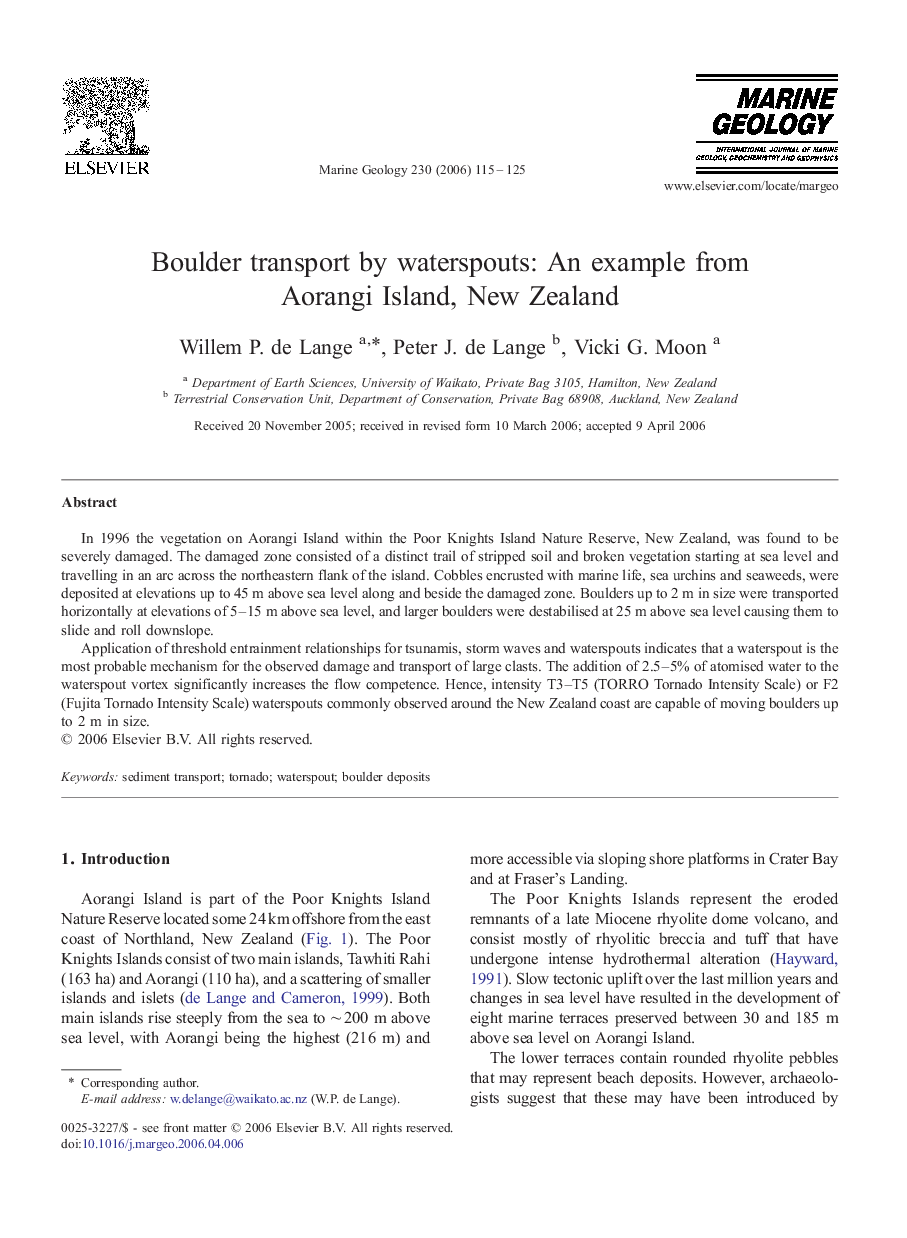| Article ID | Journal | Published Year | Pages | File Type |
|---|---|---|---|---|
| 4719783 | Marine Geology | 2006 | 11 Pages |
In 1996 the vegetation on Aorangi Island within the Poor Knights Island Nature Reserve, New Zealand, was found to be severely damaged. The damaged zone consisted of a distinct trail of stripped soil and broken vegetation starting at sea level and travelling in an arc across the northeastern flank of the island. Cobbles encrusted with marine life, sea urchins and seaweeds, were deposited at elevations up to 45 m above sea level along and beside the damaged zone. Boulders up to 2 m in size were transported horizontally at elevations of 5–15 m above sea level, and larger boulders were destabilised at 25 m above sea level causing them to slide and roll downslope.Application of threshold entrainment relationships for tsunamis, storm waves and waterspouts indicates that a waterspout is the most probable mechanism for the observed damage and transport of large clasts. The addition of 2.5–5% of atomised water to the waterspout vortex significantly increases the flow competence. Hence, intensity T3–T5 (TORRO Tornado Intensity Scale) or F2 (Fujita Tornado Intensity Scale) waterspouts commonly observed around the New Zealand coast are capable of moving boulders up to 2 m in size.
